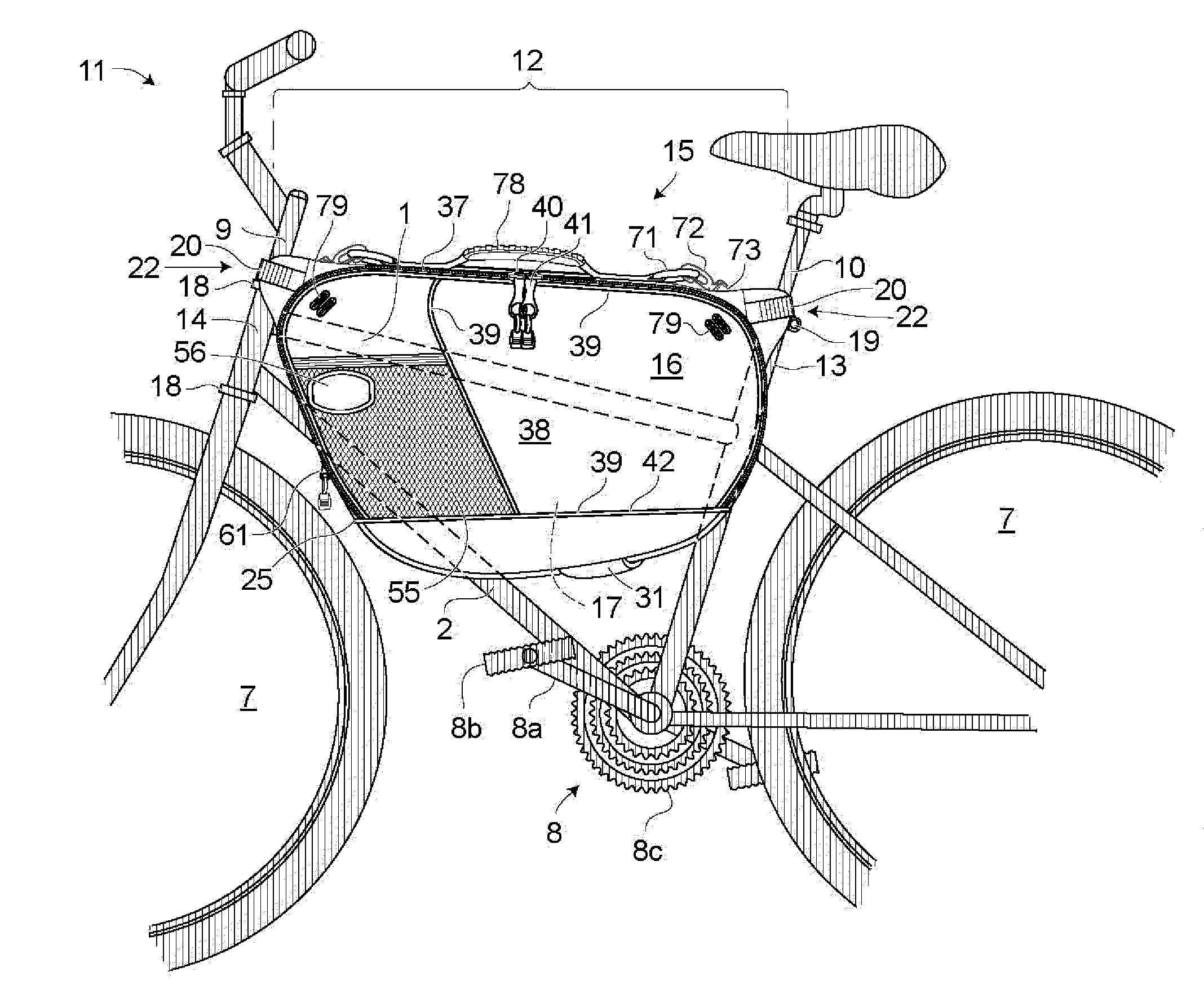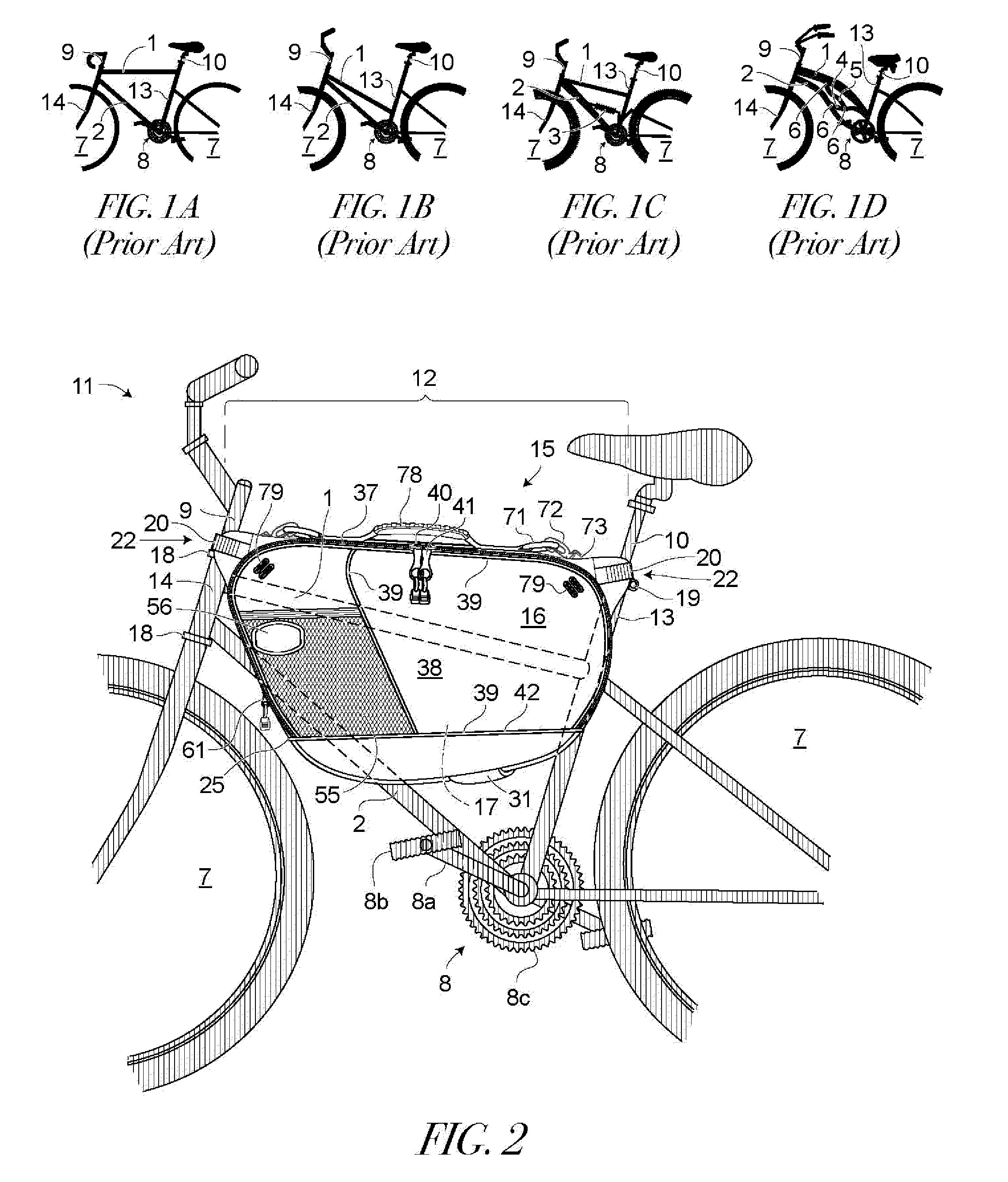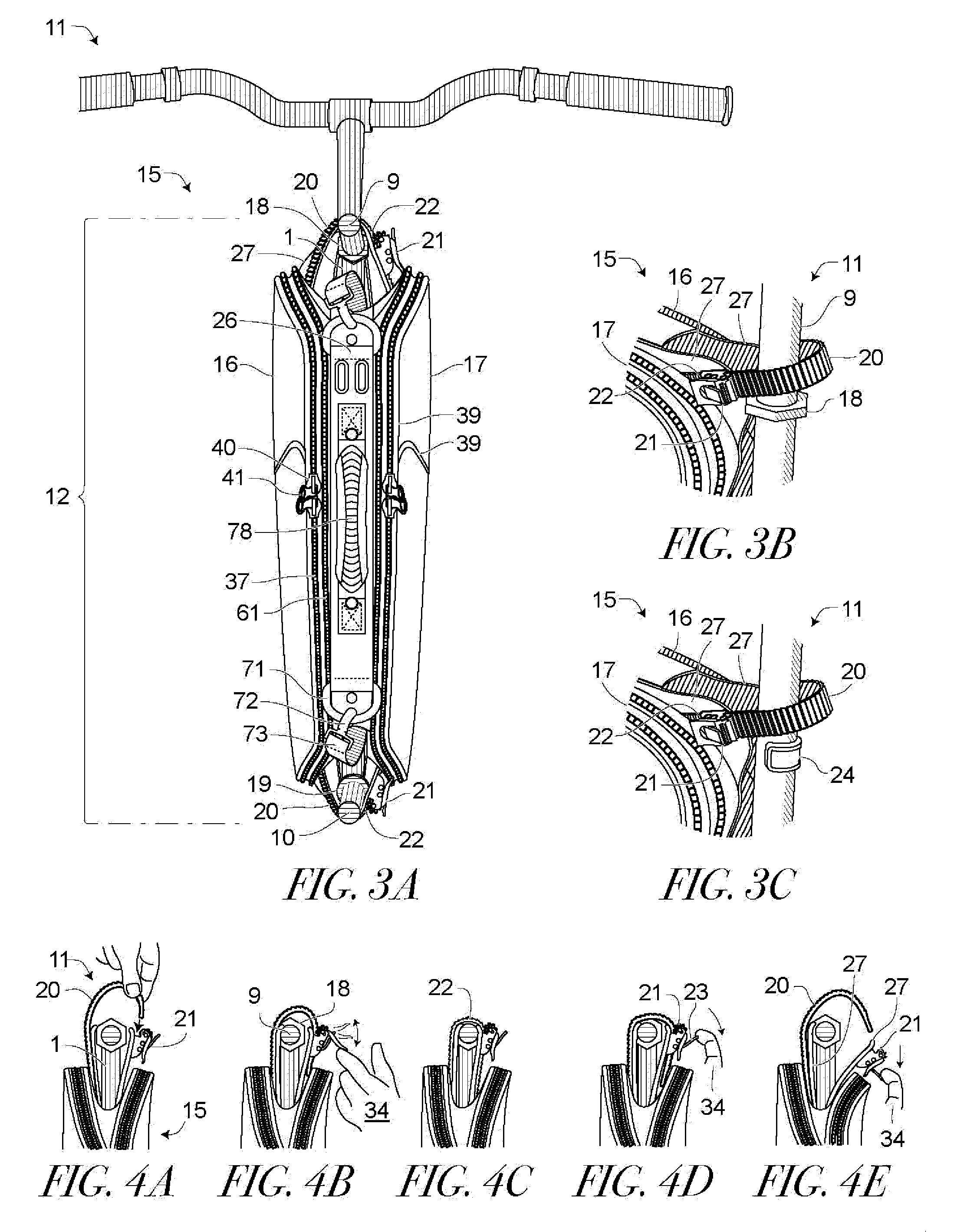Bicycle article carrier
a bicycle and article technology, applied in the field of bicycle article carriers, can solve the problems of difficult steering of bicycles, adverse effects on the balance of bicycle riders, and require serious assembly and the use of tools, so as to minimize potential nuisance and resistance, maximize potential capacity, and facilitate attachment and removal
- Summary
- Abstract
- Description
- Claims
- Application Information
AI Technical Summary
Benefits of technology
Problems solved by technology
Method used
Image
Examples
Embodiment Construction
[0044]1. Attachment to a Bicycle
[0045]With reference to FIGS. 1A-D, those skilled in the art will recognize from the prior art that: FIG. 1A represents in silhouette a typical “men's” racing-style bicycle frame characterized by a generally horizontal top tube 1; FIG. 1B represents in silhouette a typical “women's” road-style or touring-style bicycle frame characterized by an especially low and downwardly sloping top tube 1; FIG. 1C represents in silhouette a BMX-style or mountain bike-style bicycle frame characterized by a generally downward sloping top tube 1, an especially robust bottom tube 2 and sometimes a rear suspension assembly 3 sometimes occupying the mid-frame void; and that FIG. 1D represents in silhouette a “California Cruiser”-style bicycle frame characterized by a variously stylized curvilinear top tube 1 and a variously stylized curvilinear bottom tube 2, often including similarly variously stylized auxiliary tubes 4 and 5 at various intersection points 6 in a style ...
PUM
 Login to View More
Login to View More Abstract
Description
Claims
Application Information
 Login to View More
Login to View More - R&D
- Intellectual Property
- Life Sciences
- Materials
- Tech Scout
- Unparalleled Data Quality
- Higher Quality Content
- 60% Fewer Hallucinations
Browse by: Latest US Patents, China's latest patents, Technical Efficacy Thesaurus, Application Domain, Technology Topic, Popular Technical Reports.
© 2025 PatSnap. All rights reserved.Legal|Privacy policy|Modern Slavery Act Transparency Statement|Sitemap|About US| Contact US: help@patsnap.com



